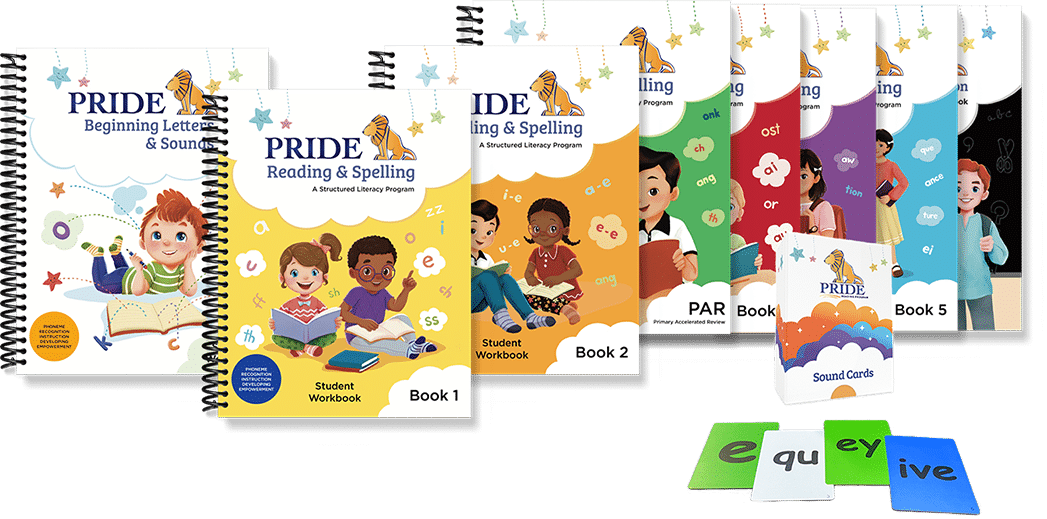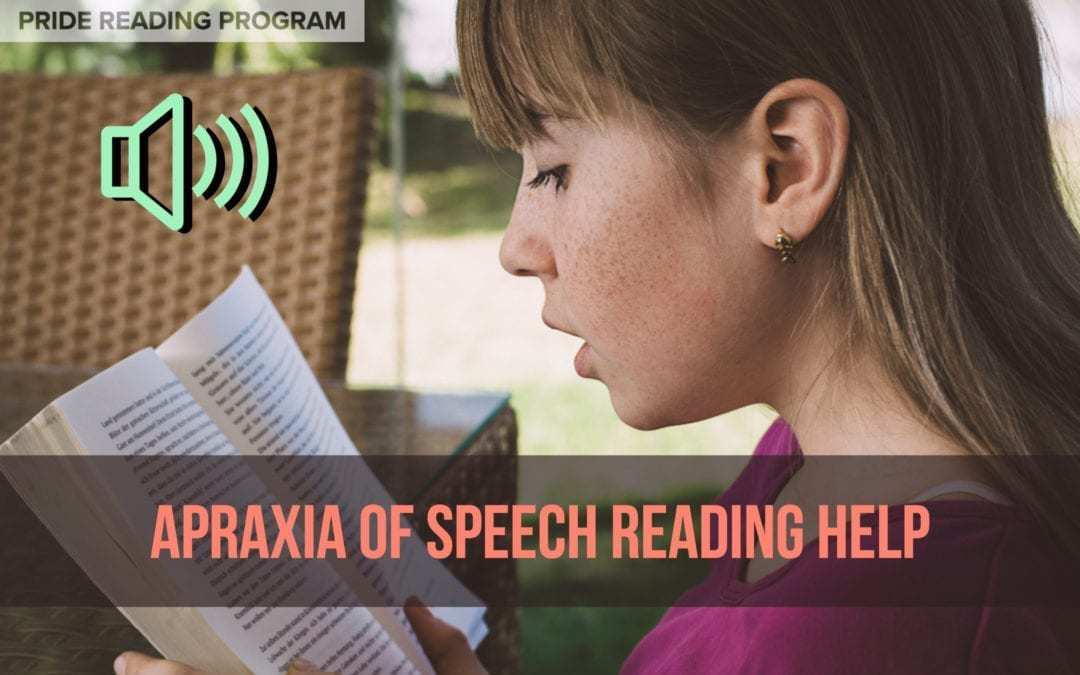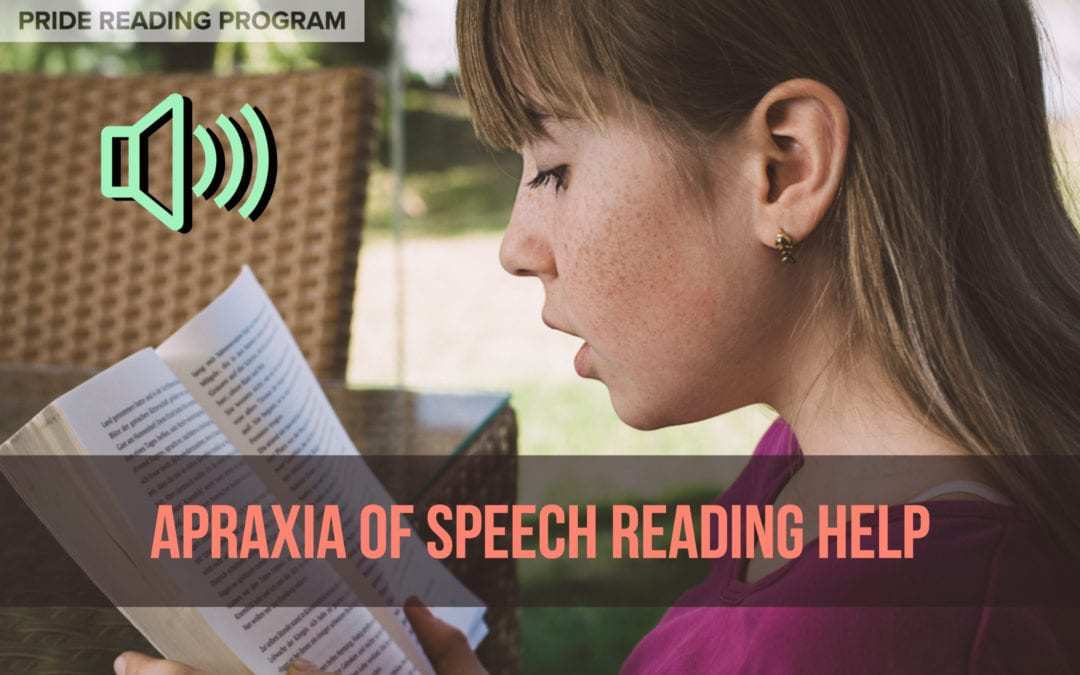Apraxia of Speech is a speech disorder that makes it difficult for children to correctly pronounce syllables and words. When a child struggles in saying the sounds, they simultaneously struggle with reading, writing, and comprehending the sounds because they are all connected. So how does a child with apraxia of speech learn best? In today’s blog post, I’m going to guide you on how you can give your child with apraxia of speech reading help.
Use a Multisensory Approach
Children with Apraxia of speech learn best by seeing it, saying it, moving with it, and touching it. This is what we call multisensory. Multisensory teaching is an important aspect of instruction for a child with Apraxia of Speech and is used by most clinically trained therapists. Multisensory teaching uses all the senses to relay information to the child. The teacher accesses the auditory, visual, and kinesthetic pathways in order to enhance memory and learning. Links are consistently made between the visual (language we see), auditory (language we hear), and kinesthetic-tactile (language we feel) pathways in learning to read. For example, when learning the letter combination “ank” like in the word “bank” the child might first look at it and then have to trace the letters in the air while speaking out loud. This combination of listening, looking, and moving around creates a lasting impression for the child as things will connect to each other and become memorable.
Use Orton-Gillingham
Kids with childhood apraxia of speech need a different approach to learning to read. They do very well with structure, routine, and a lot of repetition when learning how to read and spell. They also need to be taught each reading and spelling skill explicitly and this needs to be taught in a small group or preferably one-on-one. Every lesson the child learns needs to be in a structured and orderly fashion. The child is taught a skill and doesn’t progress to the next skill until the current lesson is mastered. As children learn new material, they continue to review old material until it is stored in the child’s long-term memory. While learning these skills, the child focuses on phonemic awareness. There are 181 phonemes or rules in Orton-Gillingham for students to learn. More advanced readers (middle school) will study the rules of the English language, syllable patterns, and how to use roots, prefixes, and suffixes to study words. By teaching how to combine the individual letters or sounds and put them together to form words and how to break longer words into smaller pieces, kids with apraxia of speech get the reading help they need.
Read more about Orton-Gillingham from my previous posts:
Show Me an Orton-Gillingham Lesson
If you are looking for an Orton-Gillingham program that is really easy to use, heavily scripted out, and perfect for tutors, teachers, and homeschooling parents, check out The PRIDE Reading Program.
Use Phonemic Awareness
Phonemic awareness is where a child identifies the different sounds that make words and associates these sounds with written words. A child cannot learn to read without this skill. In order to learn to read, children must be aware and able to sound out each of the phonemes in the English language. A phoneme is the smallest functional unit of sound. For example, the word ‘bench’ contains 4 different phonemes. They are ‘b’ ‘e’ ‘n’ and ‘ch.’ Research clearly shows that phoneme awareness performance is a strong predictor of long-term reading and spelling success for children with speech and language disabilities. In fact, according to the International Reading Association, phonemic awareness abilities in kindergarten (or in that age range) appear to be the best single predictor of successful reading acquisition! Some examples of using phonemic awareness with your child who needs apraxia of speech reading help are:
- Identify rhymes – “Tell me all of the words you know that rhyme with the word “bat.”
- Listening to sounds. “Close your eyes as I read some words to you. When you hear the “f” sound, raise your hand.”
- Manipulating sounds in words by adding, deleting, or substituting, “In the word hat, change the h to b.” (bat)
In Summary
Apraxia of Speech reading help should include multisensory teaching approaches so that the child sees it, says it, hears it, and moves with it. It is also very important to use an Orton-Gillingham program that is structured, sequential, and cumulative. Using a lot of phonemic awareness activities like rhyming, blending, substituting, and manipulating sounds will benefit the child with apraxia of speech tremendously.
Thank you for reading my post today!
Please don’t leave without checking out the PRIDE Reading Program. The PRIDE Reading Program is an Orton-Gillingham curriculum that is used by teachers, tutors, and homeschooling parents worldwide with great success.


Karina Richland, M.A., is the author of the PRIDE Reading Program, a multisensory Orton-Gillingham reading, writing and comprehension curriculum that is available worldwide for parents, tutors, teachers and homeschoolers of struggling readers. Karina has an extensive background in working with students of all ages and various learning modalities. She has spent many years researching learning differences and differentiated teaching practices. You can reach her by email at info@pridereadingprogram.com or visit the website at www.pridereadingprogram.com


